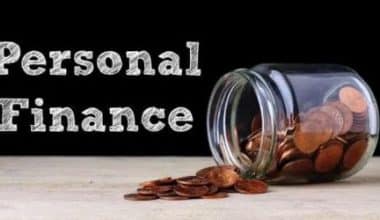You have financial objectives, correct? As an example, consider building or repairing your credit. Did you know that using a credit card wisely can help make both of these things happen?
Using your card for purchases alone will not help you build or rebuild your credit score. Building and rebuilding your credit is more about using your card properly over time to assist enhance your credit score. A higher credit score may also aid with things like mortgage qualification and even job placement. Continue reading for advice on how to build credit as a cardholder.
How to Use a Credit Card to Build Credit
You build credit by managing a credit product responsibly, such as a credit card or a loan. The lender will record your actions to the three major consumer credit agencies, Equifax, Experian, and TransUnion, each of which keeps a credit report with your history. While your credit reports do not contain your credit score, your score is calculated using information from your reports. Here are five credit card credit-building tips:
#1. Pay on time, every time (35% of your FICO score)
The most crucial component in building good credit is paying on time. Payment history accounts for 35% of your FICO Score (the credit scoring model most lenders use) and 41% of your VantageScore.
We always advise paying off your credit card in full because doing so usually allows you to avoid interest charges through a grace period. If you are unable to pay off the entire sum, make at least the minimum monthly payment required to avoid the issuer reporting a late payment to the credit bureaus.
If you miss a payment deadline, make it as soon as possible. Issuers often don’t report you to the bureaus as late until you’re 30 or even 60 days past due, so you can protect your score by paying on time.
#2. Maintain a modest utilization rate (30% of your FICO score).
It’s a good idea to keep your credit utilization at 30% or less. When you are near maxing out your card, issuers may see it as an indication that you may be unable to repay what you borrowed.
Utilization, also known as utilization ratio, refers to how much of your credit limit you are using. For example, if you have a $150 balance on a credit card with a $500 credit limit, your utilization is 30%.
Utilization is calculated for each individual card as well as for all of your credit cards together. Carrying $150 on a card with a $500 limit and $600 on a card with a $1,000 maximum, for example, would result in 50% overall utilization.
#3. Keep new credit applications to a minimum (15% of your FICO score).
You should exercise caution when applying for new credit cards, and limit the number of new accounts you open.
The length of your credit history accounts for 15% of your FICO Score. Part of this is due to the average age of your accounts, which decreases each time you open a new one. Furthermore, applying for new credit results in a hard inquiry, which might lower your credit score by five to ten points.
Applying for new credit with caution can allow you to keep your average age of accounts longer while lowering the number of inquiries on your credit reports. This will also assist you in avoiding raising a red flag to potential lenders: Applying for fresh credit too frequently may signal to lenders that you are desperate, making you a dangerous borrower.
#4. Make frequent use of your card
While you should avoid spending more on your new account than you can afford to repay, you should use your credit card on a frequent basis.
Credit card companies prefer to see that you’re using your card and not just sitting on it. Furthermore, the “length of credit history” element in your FICO Score considers how long it has been since you used specific accounts.
To build credit, you don’t have to spend a lot of money on your credit card. Charge a small, recurring item to your credit card, such as a monthly streaming subscription – then set up autopay to ensure you never miss a payment. Even if you forget about the card, those monthly transactions and on-time payments should aid you on your way to a decent credit score.
#5. Raise your credit limit.
Increasing your credit limit is another approach to reducing your credit use. A bigger credit limit allows you to spend more freely without significantly boosting your utilization percentage.
It is conceivable that you will not be able to increase your credit limit straight soon. New cardholders typically begin with a modest credit limit, particularly if they have a secured card, where your deposit decides your limit. Consider this stage to be a long-term aim rather than a short-term one.
You can most likely increase your credit limit with time and careful behavior. Some secured card providers allow you to get your deposit returned and graduate to an unsecured card. With an unsecured card, you can usually seek a greater credit limit on a regular basis. This may be possible through your online account or by calling the customer support number on the back of your card.
How often should you use a credit card to build credit?
To keep your credit card account open and operational, you should use it at least once every three months. This frequency also assures that your card company continues to transmit changes to credit bureaus.
Obtaining Your Own First Credit Card
When you have a limited credit history or no credit at all, it is critical to choose the correct credit card to apply for. While many of the most rewarding credit cards demand good to excellent credit, there are cards that are more welcoming to people who are new to credit, such as secured cards, student cards, and shop cards.
Use a Secured Card to Build Credit.
A secured credit card is generally a smart option if you have a low credit score or no credit history at all. It’s “secured” because you’ll have to pay the issuer a security deposit in the amount of your chosen credit limit. Because this protects the issuer if you default, secured cards are frequently available even if you have limited or terrible credit.
The Discover it® Secured Credit Card is a standout secured card. A deposit of $200 to $2,500 is required, there is no annual charge, and the card is available to individuals with poor/limited credit.
Use a Student Card to Build Credit.
There are credit cards specifically developed for college students to help them build a credit history.
The Capital One SavorOne Student Cash Rewards Credit Card is a standout student card. There is no deposit necessary, no annual charge, and the card is available to individuals with fair/limited credit.
This card, in particular, offers a significant cash-back scheme. Cardholders receive 3% Cash Back on eating and entertainment purchases, 3% Cash Back on popular streaming services, 3% Cash Back at grocery shops, and 1% Cash Back on all other purchases. Vivid Seats offers 8% cash back on Capital One Entertainment purchases and tickets.
Nonetheless, it has a potentially high APR: 17.99% – 27.99%. (variable).
Use a Shop Card to Build Credit
You’re already familiar with shop credit cards if you’ve ever been asked when checking out at a store whether you want to apply for that brand’s credit card, or if you’ve been offered the option to start a credit card application during your Amazon checkout process. The good news is that store cards can help you build credit and often have fewer limitations than other types of credit cards. The bad news is that they frequently come with reward programs that appear to be geared to entice you to spend more than you would normally at the store, as well as sky-high interest rates.
Adding yourself as an authorized user on someone else’s credit card
If you don’t qualify for your own credit card (or simply don’t want one), but you have a family member or close friend who manages their finances carefully, you can consider becoming an authorized user on one of their cards.
Becoming an authorized user can significantly improve your credit score. Balances and payment history from several cards are posted to the credit reports of both the original cardholder and the authorized user. That means that if a family member or friend uses the card, you’re essentially “borrowing” their history with that account – even if you never use the card yourself.
On the other hand, the primary cardholder is ultimately liable for any credit card charges you incur. To avoid controversy with relatives or friends, be sure you’ve figured out how to pay back any purchases you make. To avoid the temptation to overspend on the account, you can even agree that the principal cardholder will keep the real card that the issuer delivers to you.
After a year or so of being an authorized user, if you feel ready, you may be able to qualify for your own credit card.
How many credit cards should I have?
Two to three credit card accounts, in addition to other sources of credit, are generally suggested if your goal is to obtain or maintain a strong credit score. This combination may be beneficial to your credit mix. Lenders and creditors like a diverse range of credit kinds on your credit record.
How Long Does It Take to Build Credit with a Secured Credit Card?
A secured credit card can help you build credit in as short as one month, but it will take many months, if not years, to build a consistently strong or exceptional credit score. The credit of time also depends on whether you’re starting from scratch or building damaged credit. If you have no credit, a few months of on-time payments could result in an excellent score. After one month, you’ll get a VantageScore and a FICO Score. With bad credit, it will most likely take 12-18 months of careful use to climb up to the fair credit level.
Secured credit cards are excellent for credit building because they are easy to obtain and report to credit bureaus, just like unsecured cards.
However, without knowing the specifics of your case, it’s difficult to give you an accurate idea of how long it will take to build credit using a secured credit card.
Read Also: HOW TO USE CREDIT CARD: Detailed Guide
The time it takes to build credit using a secured credit card is as follows:
- If you have no credit, it will take one month to obtain a VantageScore and six months to obtain a FICO score. Your initial score could range from awful to good depending on how responsibly you utilize your card.
- If you pay your bills on time and otherwise handle your finances appropriately, you can repair from a terrible credit score (300-639) to a decent credit score (640-699) in 12-18 months.
- Based on insufficient information, a strong credit score could simply plummet owing to an increase in credit utilization or a single missed payment. Building and then maintaining a strong or exceptional credit score takes time and consistency. This is a multi-year effort.
- Some negative information, such as bankruptcies and late payments, will erase from your credit record after 7-10 years for persons rebuilding credit. However, the older they are, the less influence they have on your score.
- If you want to rebuild your credit, secured credit cards are the greatest option. They’re simple to obtain and, other than the deposit requirement, are indistinguishable from unsecured cards. Rebuilding credit will take time, so get started as soon as feasible. Paying on time is always a good practice, as is using less than 30% of your available credit.
How Can You Build Credit Without Using a Credit Card?
While opening and using credit cards might be a smart strategy to build credit, they are not the only ones. Loans and other forms of accounts that you can report to credit bureaus can also help.
When you first start out, you could check for credit-builder loans, which are expressly meant for this purpose. Other frequent loans, such as student, vehicle, and home loans, can also help you build credit.
Making on-time loan payments, as with credit cards, is the most crucial component in building credit. Your remaining balance can also have an impact on your credit scores, but it is not as crucial as credit card utilization rates.
Other sorts of accounts, such as utility and phone agreements, are frequently not reported to the bureaus and have no effect on your credit.
How much money should you leave on your credit card?
Experts advise maintaining your credit use below 30% of your total available credit, according to the Consumer Financial Protection Bureau (CFPB). If you have a high utilization rate, you may notice your ratings improve once you report a lower amount or a greater credit limit.
Conclusion
A credit card has numerous advantages, but one of the most important is its capacity to help you build credit. Never miss a payment, keep track of your card balances, and be proactive to see your credit improve.
Related Articles
- CREDIT LINE INCREASE: How to Request Credit Line Increase
- WHAT IS A FAIR CREDIT SCORE? How To Improve It
- HOW TO GET A HIGHER CREDIT LIMIT ON A CREDIT CARD
- What Is a Credit Limit? How Does Affect Credit Score
- WHAT CREDIT SCORE DO YOU START WITH: All You Should Know






